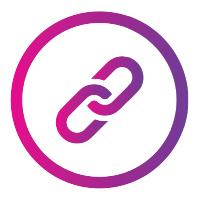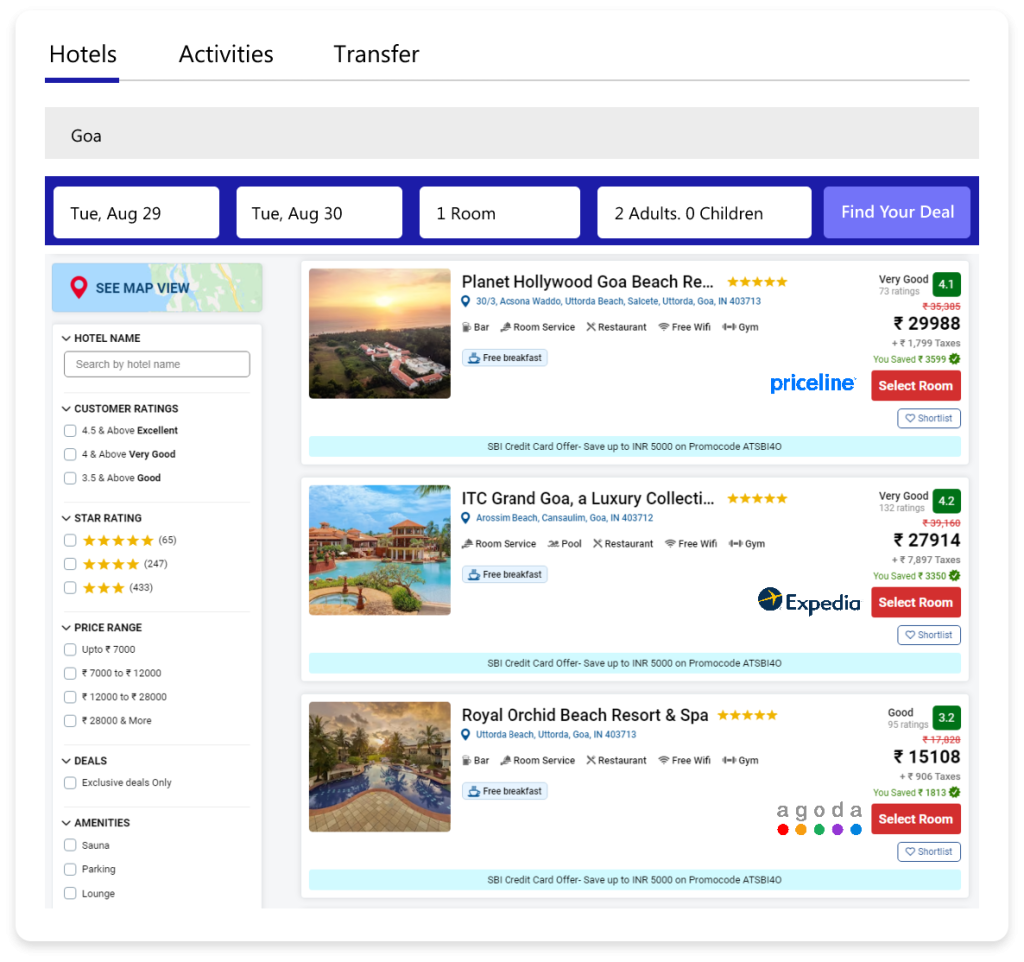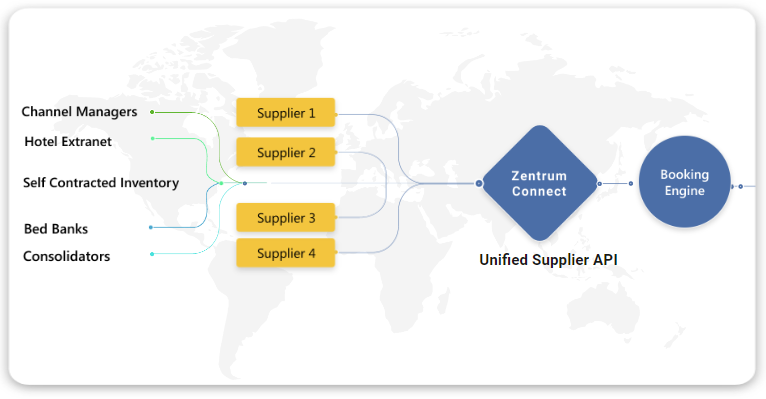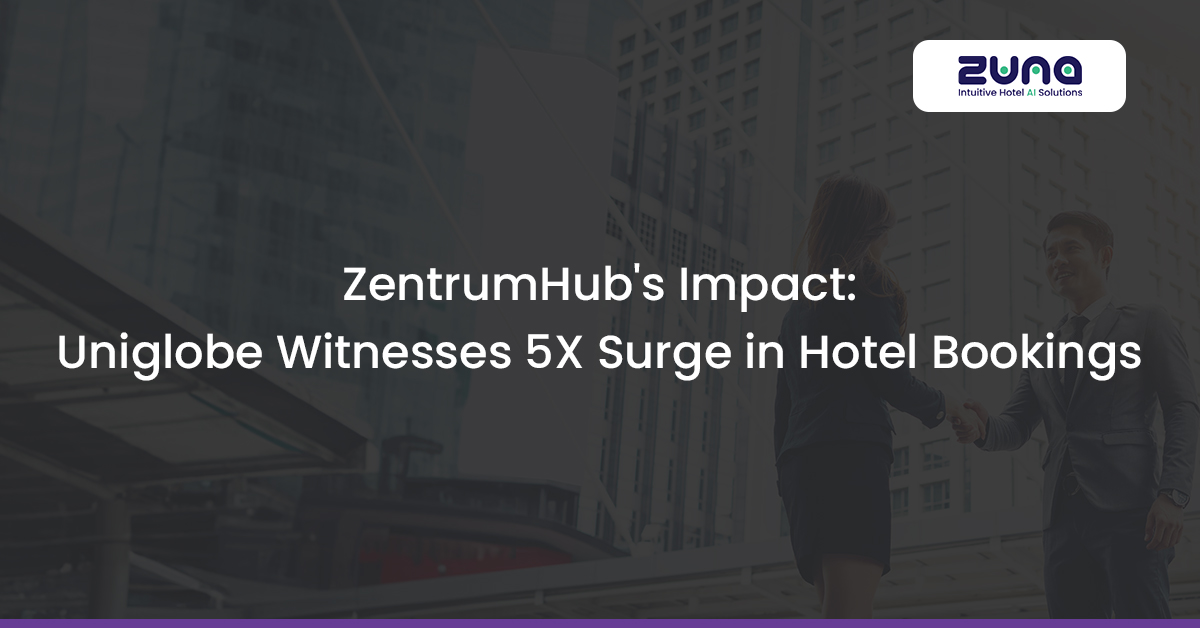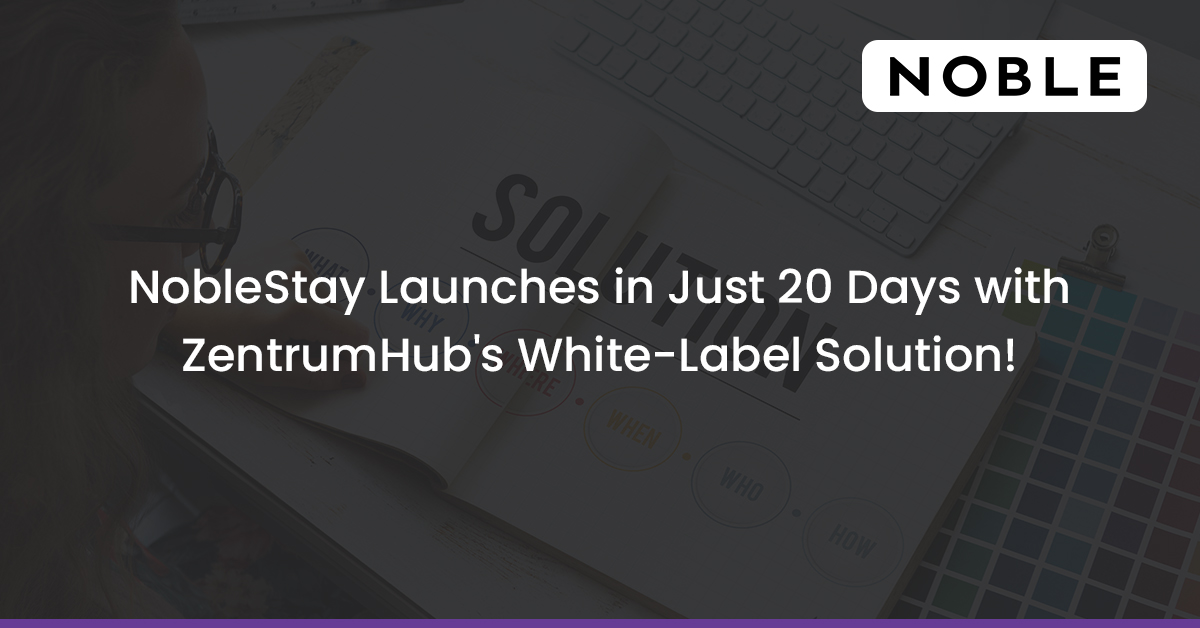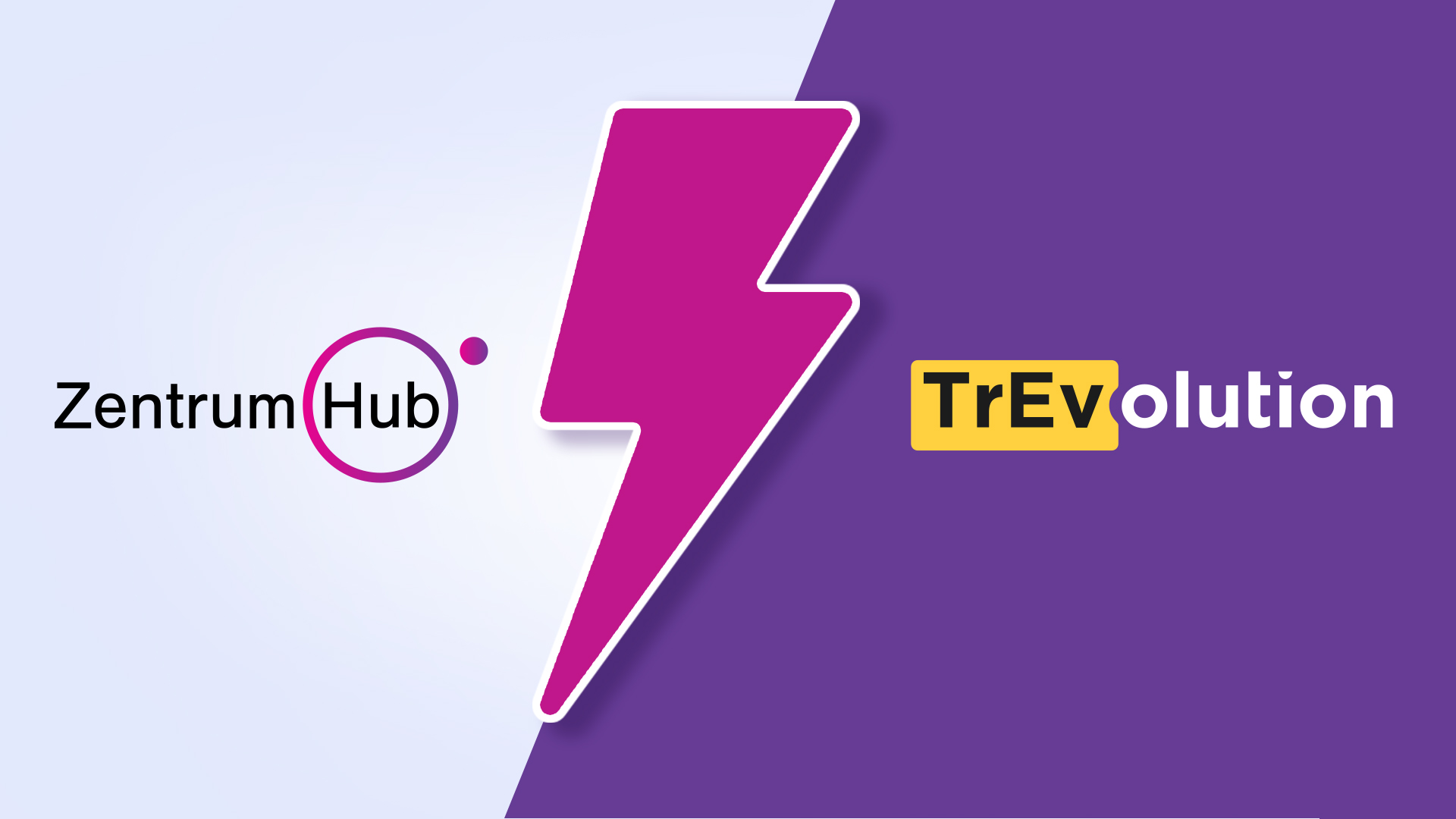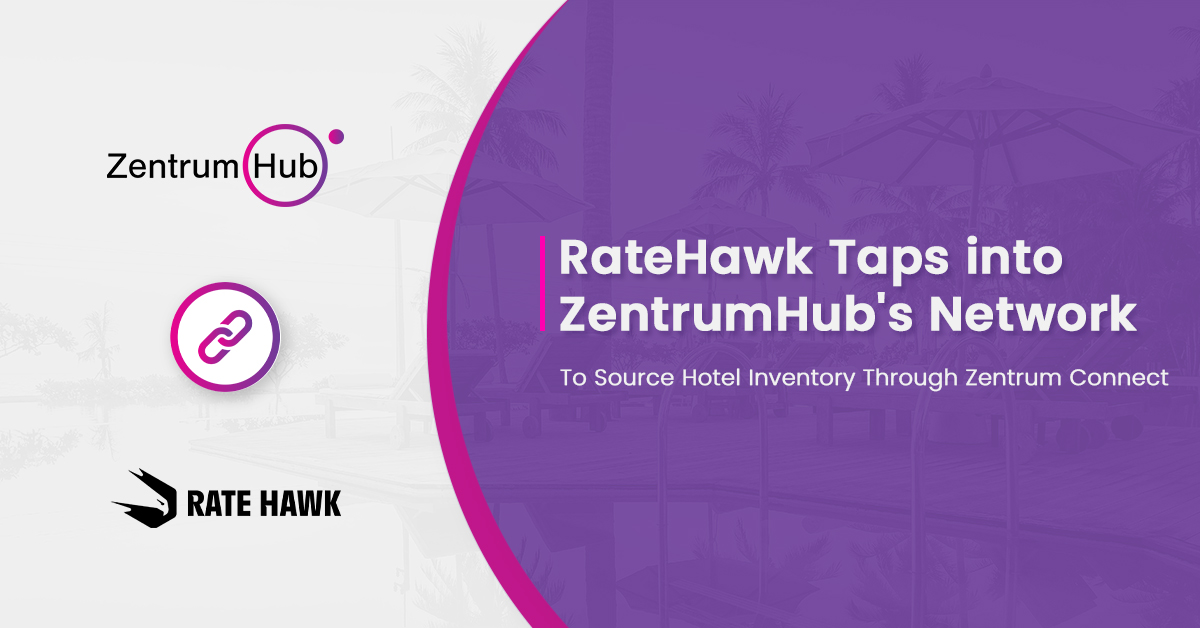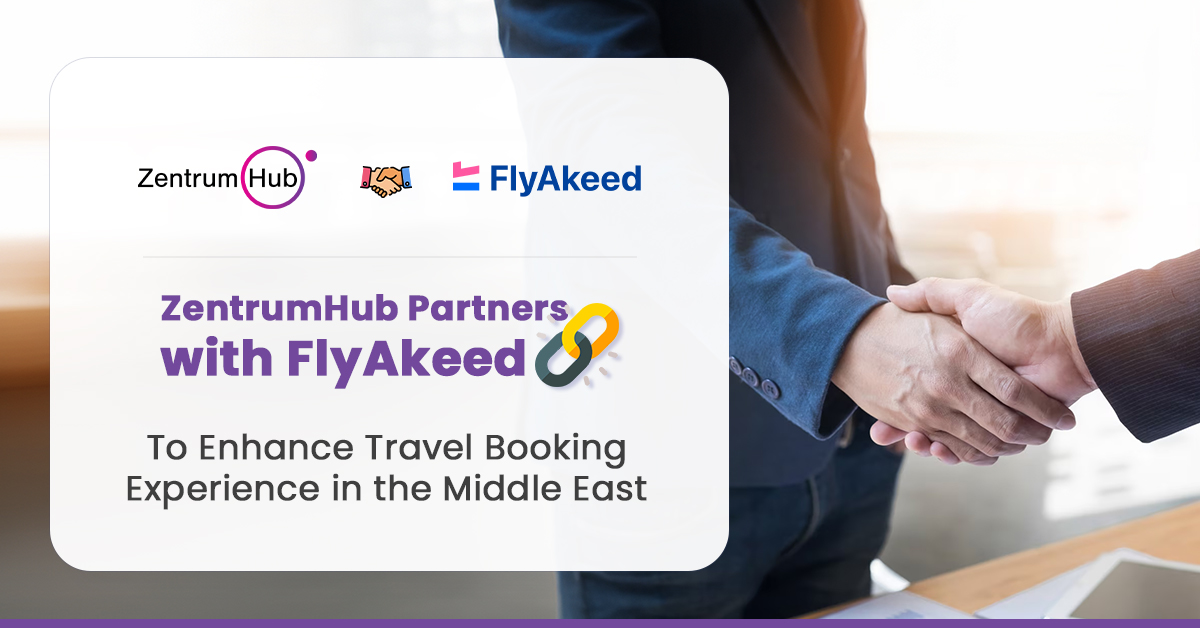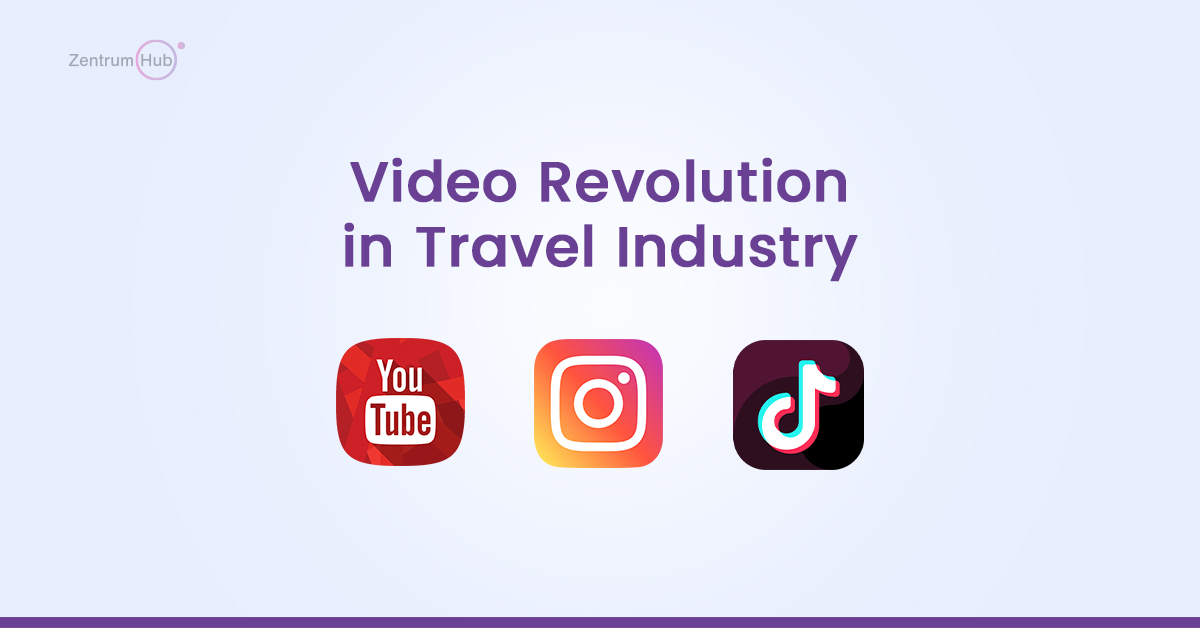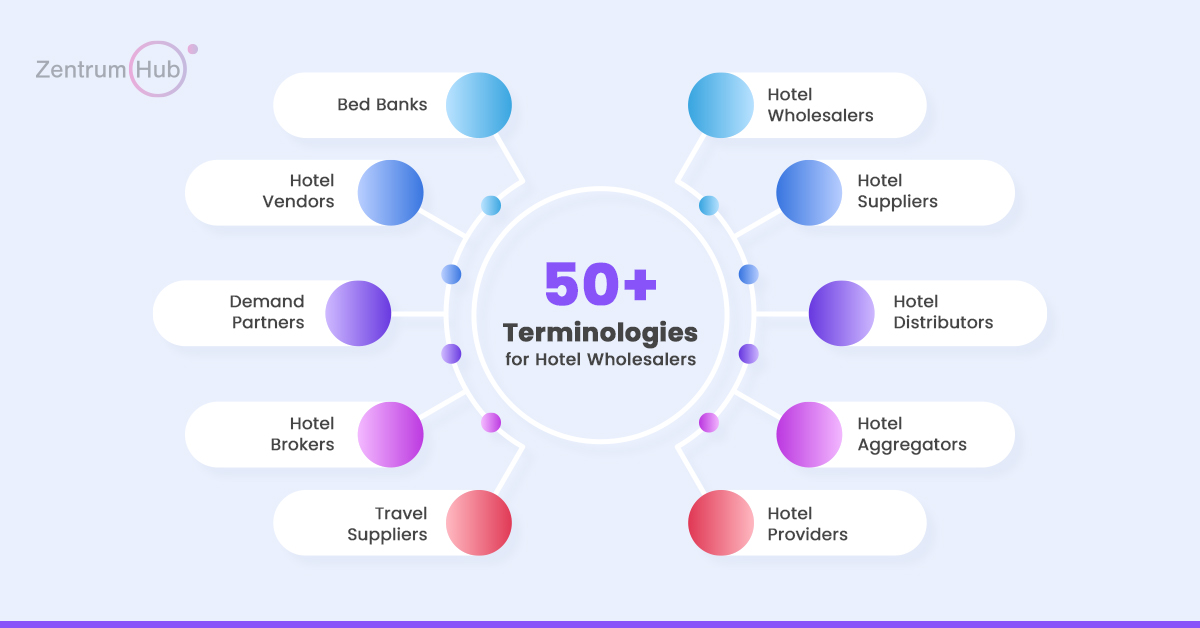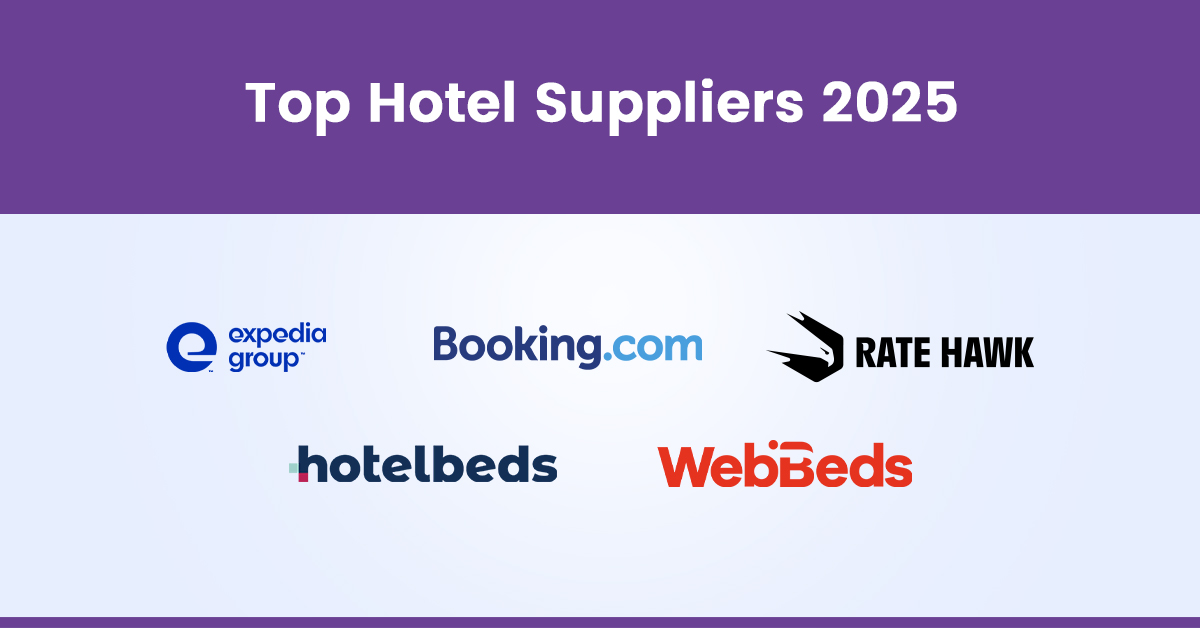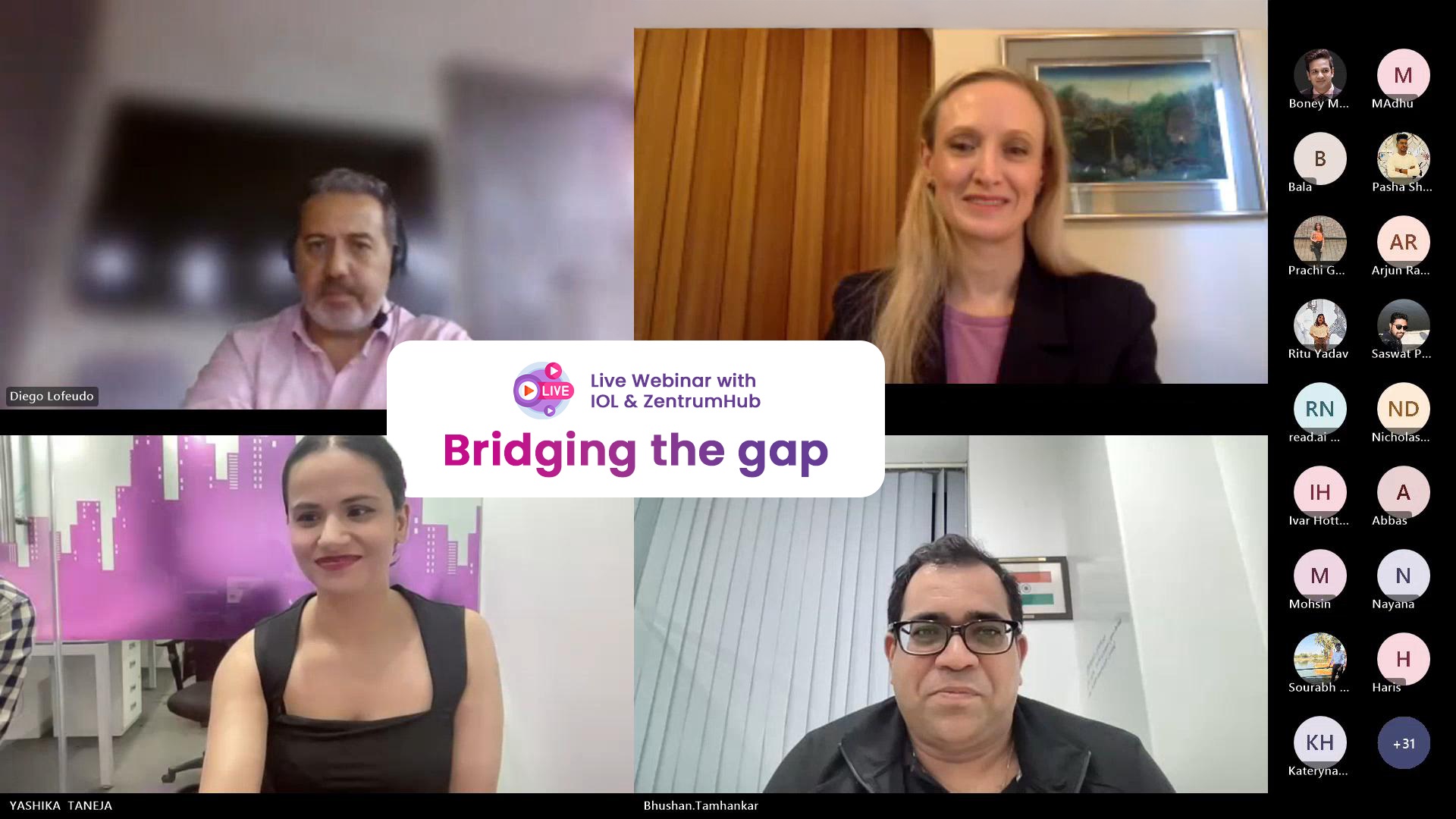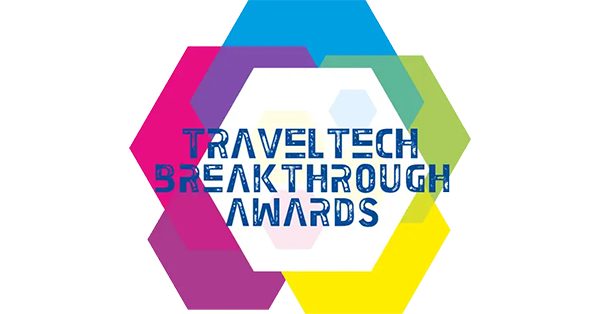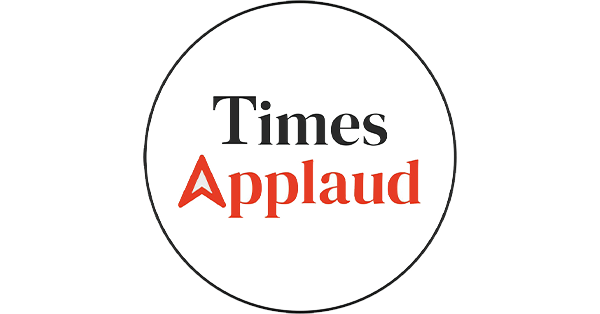How Payment Fraud Occurs in the Hotel Industry?
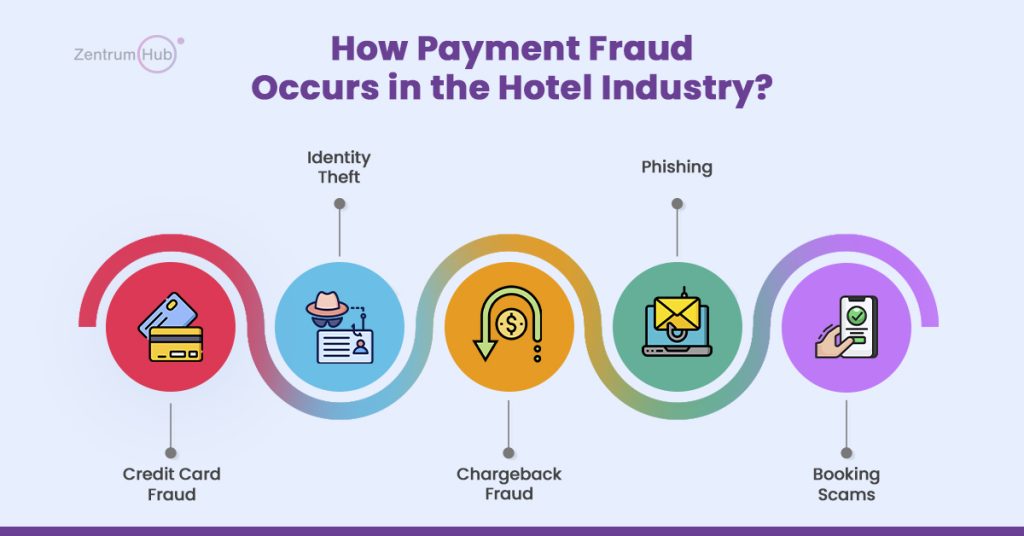
How Payment Fraud Occurs in the Hotel Industry? Overview How Payment Fraud Occurs in the Hotel Industry? Preventive Measures You Can Take How Stripe Radar Detects Payment Fraud? ZentrumHub’s Implementation of Stripe for Fraud Protection In today’s interconnected world, the hotel industry faces significant challenges in safeguarding against payment fraud, a pervasive threat that can result in financial loss and reputational damage. Understanding how fraud occurs and implementing effective preventive measures is crucial for maintaining trust and security in transactions. How Payment Fraud Occurs in the Hotel Industry? Payment fraud in the hotel industry can take various forms, each exploiting vulnerabilities in payment processes and guest information handling: Credit Card Fraud: This involves the unauthorized use of stolen credit card information to book rooms or services. Fraudsters may use compromised card details to make reservations either online or over the phone, often targeting high-value bookings or luxury services. Identity Theft: Exploiting stolen personal information, such as names, addresses, and card details, fraudsters may create fictitious identities to book rooms. This type of fraud not only affects the hotel’s revenue but also damages the victim’s credit history and personal finances. Chargeback Fraud: In this scenario, fraudsters make a legitimate booking and then dispute the charge with their credit card issuer after receiving the services. They may claim the transaction was unauthorized or the services were unsatisfactory, resulting in a charge back to the hotel. Phishing: Phishing attacks target hotel staff or guests, using deceptive emails or websites that mimic legitimate hotel communications or booking platforms. These scams aim to steal payment information or login credentials, posing a significant threat to both guest security and the hotel’s reputation. Booking Scams: Fraudsters exploit vulnerabilities in online booking systems to manipulate reservations or exploit discounts intended for specific groups (e.g., seniors or loyalty members). They may use automated scripts to book rooms at discounted rates and resell them at higher prices, defrauding both the hotel and potential guests. These tactics highlight the diverse methods used by fraudsters to exploit vulnerabilities in payment processes within the hospitality sector. Read more The Role of AI in the Hospitality Industry: 2024 Trends Preventive Measures You Can Take To combat payment fraud effectively, hotels can implement several preventive measures: Encryption and Secure Payment Gateways: Utilizing encryption technologies and secure payment gateways ensures that guest payment information is protected during transactions, preventing unauthorized access to reduce the risk of data breaches. Two-Factor Authentication: Implementing additional layers of security, such as requiring two-factor authentication for online bookings or guest account access, helps verify guest identities and prevent unauthorized use of credentials. Staff Training: Educating staff on identifying suspicious activities and adhering to secure payment handling protocols is crucial. Staff should be aware of common fraud tactics, such as phishing scams or credit card skimming, and trained to handle sensitive guest information securely. Regular Security Audits: Conducting periodic audits of payment systems and processes helps identify and rectify potential vulnerabilities. This proactive approach ensures that security measures are up to date and effective against evolving fraud tactics. Fraud Monitoring Tools: Utilizing advanced fraud detection tools and services, such as Stripe Radar or similar solutions, enables hotels to analyze transaction patterns and detect anomalies in real-time. How Stripe Radar Detects Payment Fraud? Stripe Radar is a robust fraud detection solution that leverages advanced technologies to safeguard against fraudulent activities. Key features include: Machine Learning Models: Trained on billions of transactions across the Stripe network, these models accurately identify and block fraudulent transactions while minimizing false positives. By analyzing transaction data in real-time, Stripe Radar can detect suspicious patterns and behaviors indicative of fraud. Customizable Rules: Businesses can create custom rules tailored to their specific needs and risk profiles. These rules allow hotels to adjust fraud detection parameters based on factors such as transaction amount, location, or guest behavior, ensuring targeted protection against fraud. Real-Time Insights: Stripe Radar provides real-time insights into transaction risks and activities. Hotels can monitor transaction risk scores, customer behavior, and emerging fraud trends, enabling proactive response to potential fraud incidents before they escalate. ZentrumHub’s Implementation of Stripe for Fraud Protection At ZentrumHub, integrating Stripe for payment processing and fraud protection has been instrumental in safeguarding clients from fraudulent activities. By leveraging Stripe Radar’s advanced capabilities, ZentrumHub ensures: Enhanced Security: Robust protection against fraudulent transactions reduces financial risks and liabilities for both ZentrumHub and its clients. Stripe Radar effectively identifies and blocks fraudulent activities. Customization: Tailoring fraud detection strategies to meet specific client requirements and industry standards enhances the effectiveness of fraud prevention efforts. ZentrumHub can adjust fraud detection and hotel booking s parameters based on client preferences, transaction volumes, and risk tolerance levels. Seamless Integration: Integrating Stripe into existing payment systems and processes streamlines payment processing and fraud management for ZentrumHub and its clients. This seamless integration ensures that Stripe Radar’s fraud detection capabilities complement existing operations without disrupting guest experiences. Real-Time Monitoring: Proactive monitoring of transaction activities and risk scores enables ZentrumHub to respond quickly to potential fraud incidents. By leveraging real-time insights provided by Stripe Radar, ZentrumHub can mitigate risks and protect client assets effectively. In conclusion, the implementation of advanced fraud detection solutions like Stripe Radar is crucial for the hotel industry to mitigate risks associated with payment fraud. By combining technology-driven approaches with proactive measures, hotels can enhance security, protect financial assets, and uphold customer trust in an increasingly digital landscape. Recommended reads for You The Role of AI in the Hospitality Industry: 2024 Trends How Payment Fraud Occurs in the Hotel Industry? SB 478: California Hotels Faces New Price Transparency Law FAQ’s: How Payment Fraud Occurs in the Hotel Industry? What types of payment fraud are common in the hotel industry? Payment fraud includes credit card fraud, identity theft, chargeback fraud, phishing, and booking scams. How can hotels prevent payment fraud? Hotels can prevent fraud by implementing encryption, two-factor authentication, staff training, regular security audits, and using advanced fraud detection tools. What is Stripe Radar and how does it help prevent fraud? Stripe
SB 478: California Hotels Faces New Price Transparency Law
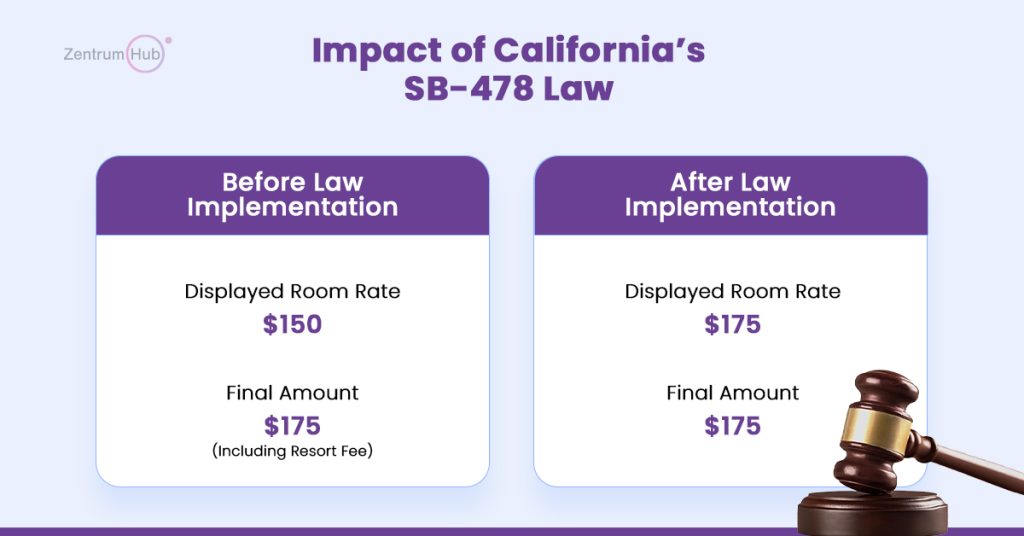
SB 478: California Hotels Faces New Price Transparency Law Overview of SB 478 Implications of SB 478 for the Hotel Industry Benefits to Consumers Conclusion California’s new law, SB 478, known as the “Honest Pricing Law,” aims to eliminate hidden fees and ensure transparent pricing for consumers. Effective from July 1st, 2024, this law mandates that businesses include all mandatory fees in the advertised price of goods and services. This law will have significant implications for various sectors, including the hotel industry. This blog delves into how the hotels sector can navigate these new requirements, ensuring compliance while maintaining consumer trust. Overview of SB 478 SB 478 addresses consumer complaints about hidden fees, such as service fees, resort fees, and other additional charges that are often revealed only at the final stages of a transaction. The law mandates that the advertised price must include all unavoidable fees, promoting transparency and fairness in pricing. However, it exempts government-imposed taxes, shipping costs, and certain behavior-based fees, such as penalties for smoking in non-smoking hotel rooms. Implications of SB 478 for the Hotel Industry The hotel industry often employs various fees that can significantly increase the final cost to the consumer. The introduction of SB 478 necessitates a fundamental change in how these businesses present their pricing to customers. Transparent Advertising Hotels businesses must ensure that all mandatory fees are included in the advertised prices. This means that resort fees, service fees, and any other compulsory charges must be incorporated into the initial price shown to the consumer. For example, a hotel that previously advertised a room rate of $150 per night with an additional $25 resort fee must now advertise the room as $175 per night. Enhanced Consumer Trust One of the primary benefits of SB 478 is the potential for increased consumer trust. When customers see an all-inclusive price upfront, it reduces the likelihood of unpleasant surprises during the booking process. This transparency can enhance customer satisfaction and foster loyalty, as guests appreciate the honesty and clarity in pricing. Challenges in Implementation of SB 478 Implementing these changes will not be without challenges. Californian hotels must review and update their pricing structures, marketing materials, and booking systems to ensure compliance. This might involve: Revising Online Booking Platforms: Ensuring that all fees are clearly displayed in the advertised price on websites and third-party booking platforms. Training Staff: Educating employees about the new requirements and how to communicate them to guests. Legal and Compliance Adjustments: Working with legal teams to ensure that all advertising and promotional materials meet the new standards. Best Practices for Compliance To comply with SB 478, Californian hotels can adopt several best practices: Clear Price Listings: Ensure that all advertised prices include mandatory fees. This transparency should extend across all marketing channels, including websites, social media, and print materials. Detailed Breakdown: While the total price must be clear, providing a detailed breakdown of the cost can help consumers understand what they are paying for. This can include a clear itemization of room rates, resort fees, service charges, and any applicable taxes. Consistent Communication: Ensure all communication channels, including customer service, align with the new pricing transparency. Consistent messaging helps avoid confusion and builds trust. Benefits to Consumers The primary goal of SB 478 is to protect consumers from deceptive pricing practices. By enforcing transparent pricing, the law empowers consumers to make informed decisions. They can compare prices accurately, knowing that the advertised price reflects the total cost they will pay. This not only enhances their shopping experience but also promotes fairness and competitiveness in the market. Conclusion California’s SB 478 represents a significant step towards greater pricing transparency in the hotel industry. By eliminating hidden fees and ensuring that the advertised price reflects the total cost, the law aims to protect consumers and promote fair competition. While the transition to compliance may pose challenges for businesses, the potential benefits in terms of increased consumer trust and satisfaction are substantial. Hotel businesses that embrace these changes and commit to transparent pricing will likely find themselves rewarded with loyal customers who value honesty and clarity. In summary, SB 478 is not just a regulatory requirement but an opportunity for the hotel industry to enhance its relationship with consumers, ultimately leading to a more trustworthy and competitive market. Recommended reads for You The Role of AI in the Hospitality Industry: 2024 Trends How Payment Fraud Occurs in the Hotel Industry? SB 478: California Hotels Faces New Price Transparency Law
How Slow Booking Systems Ruin Online Travel Agencies?
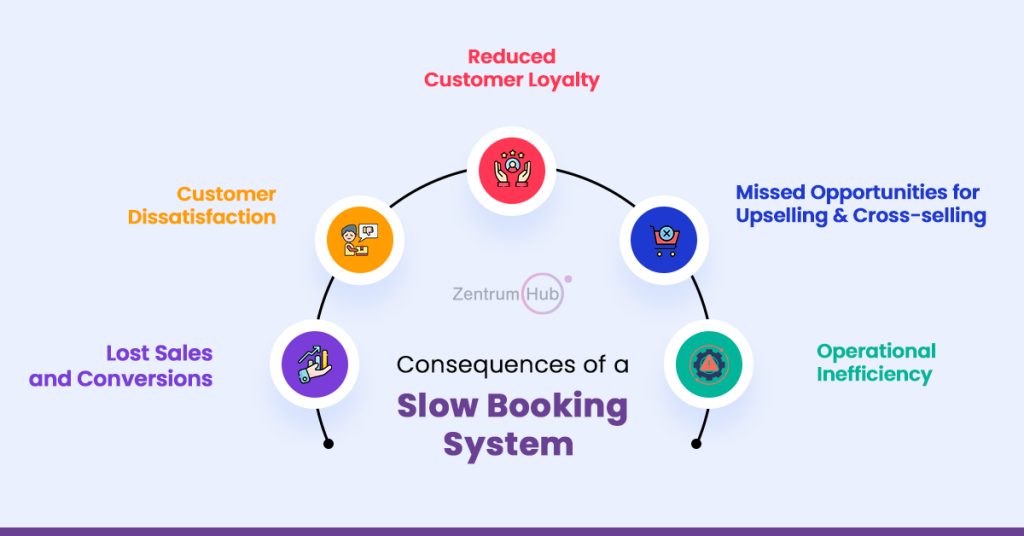
How Slow Booking System Can Ruin Online Travel Agencies? Overview Consequences of a Slow Booking System Impactful Solutions for Slow Booking System Conclusion Imagine a customer brimming with wanderlust, ready to book their dream vacation. They land on your OTA’s website, eager to secure that perfect flight and hotel combo. But then, the wait begins. The page takes ages to load, the search results trickle in, and finally, when they reach the checkout stage, the system grinds to a halt. Frustration sets in, and before you know it, your potential customer has vanished into the digital abyss, likely to a competitor with a smoother booking experience. This scenario, unfortunately, isn’t just a hypothetical nightmare. Slow booking systems can have a significant negative impact on OTAs in several ways. This blog aims to find out the solutions of such many problems that can cause your OTAs to perform poorly. Consequences of a Slow Booking System As an OTA it is necessary to have a responsive and quick booking system; however, on the flipside there are several consequences that one can face. Let’s have a look at it. Lost Sales and Conversions: Impatient travelers won’t wait around for a slow system to catch up. Studies show that website loading speed directly affects conversion rates. A study by Unbounce found that a one-second delay in page load time can result in a 7% decrease in conversions. In the competitive world of OTAs, that 7% can translate into a significant loss of revenue. Customer Dissatisfaction: A slow booking system creates a frustrating user experience. Imagine spending time comparing flights and hotels, only to be met with lag and delays at the crucial checkout stage. This frustration can damage customer perception of your brand and lead to negative reviews, further deterring potential customers. Reduced Customer Loyalty: In today’s travel landscape, convenience reigns supreme. Travelers expect a seamless booking process, and a slow system disrupts this expectation. This can lead to customers abandoning your OTA altogether and seeking out competitors with faster, more user-friendly booking experiences. Missed Opportunities for Upselling and Cross-selling: Slow booking systems can hinder your ability to upsell and cross-sell additional travel products and services. If the checkout process is cumbersome, customers are less likely to consider adding activities, travel insurance, or other travel essentials to their booking. Operational Inefficiency: A slow booking system can create inefficiencies for your own staff. Time spent troubleshooting technical issues or manually processing bookings translates into lost time and resources that could be better spent on customer service or marketing initiatives. Impactful Solutions for Slow Booking System What can OTAs do to combat the negative impacts of slow booking systems? Here are some key strategies: Invest in System Upgrades: Modern, cloud-based booking systems are designed for speed and scalability. Upgrading your existing system or migrating to a new one can significantly improve processing times and ensure a smooth booking experience for your customers. Optimize Your Website: Beyond the booking system itself, website optimization plays a crucial role. Implement techniques like image compression, code minification, and content delivery networks (CDNs) to ensure fast page loading speeds. Prioritize Mobile Friendliness: With the rise of mobile travel booking, a user-friendly mobile experience is essential. Ensure your booking system is optimized for mobile devices and offers a seamless experience across all platforms. Streamline the Booking Process: Analyze your booking process and identify any unnecessary steps that can be eliminated. The fewer clicks and form fields a customer needs to navigate, the faster and more efficient the booking experience will be. Focus on User Experience: Regularly test your booking system and gather user feedback. Identify any pain points that cause delays or frustration and prioritize improvements in those areas. Remember, a user-friendly booking system is an investment, not just a technical hurdle. Transparency is Key: If there are unavoidable delays or system maintenance periods, be upfront with your customers. Communicate these issues clearly on your website and social media channels to manage expectations and prevent unnecessary frustration. Conclusion In conclusion, slow booking systems are a big no-no for OTAs in today’s competitive travel market. By investing in system upgrades, optimizing website performance, and prioritizing user experience, OTAs can ensure a smooth and efficient booking process that keeps customers happy and conversions high. Remember, in the age of instant gratification, speed is not just a convenience – it’s a necessity for success in the online travel industry. So, don’t let a sluggish booking system clip your wings. Act today and create a booking experience that keeps your customers coming back for more. Read more useful blogs for Travel Agencies (OTAs) How Slow Booking System Can Ruin Online Travel Agencies? Why Traditional Hotel Booking Methods Are Costing You Time and Money? Should OTAs Prefer In-House VS Outsourcing Tech Solutions How to Choose Payment Gateways for OTAs? 8 Factors to Consider Before Choosing the Right Hotel Supplier for OTAs How Can B2B Hotel Booking Portal Save Your OTA Business Time & Money? 4 Data Analytics for OTAs to Improve Customer Experience and Business Operations FAQ’s: How Slow Booking System Can Ruin Online Travel Agencies? How does a slow booking system affect my OTA’s revenue? A slow booking system can lead to lost sales and conversions, as impatient travelers are likely to abandon their booking and seek faster alternatives. Studies show that even a one-second delay in page load time can result in a 7% decrease in conversions, significantly impacting your revenue. What are the key strategies to improve my OTAs booking system speed? To enhance booking system speed, invest in system upgrades such as modern, cloud-based solutions. Additionally, optimize your website through techniques like image compression, code minification, and content delivery networks (CDNs). Streamlining the booking process and focusing on mobile friendliness are also crucial. How can a slow booking system affect customer satisfaction and loyalty? A slow booking system frustrates users, leading to a negative experience. This can damage your brand’s perception, result in negative reviews, and decrease customer loyalty. Travelers expect a seamless experience,
Why Traditional Hotel Booking Methods Are Costing You Time and Money?
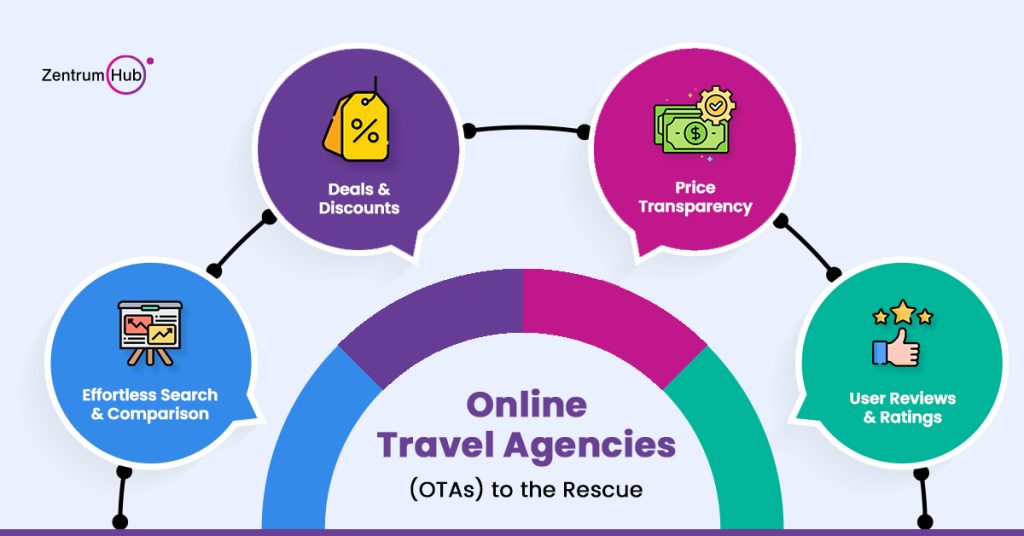
Why Traditional Hotel Booking Methods Are Costing You Time and Money? Overview The Problems with Traditional Booking Stepping into the Future: Online Travel Agencies (OTAs) Beyond OTAs: Supplier Connectivity for Inventory Optimization Conclusion Planning a trip is an exhilarating experience, filled with anticipation for new adventures and discoveries. However, amidst the excitement lies the often-daunting task of finding the perfect hotel. Traditional booking methods, once the norm, now seem outdated and inefficient in today’s fast-paced world. Let’s delve into the reasons why sticking to these old-fashioned methods can ultimately cost you both valuable time and hard-earned money. The Problems with Traditional Booking 1) The Slow Approach Picture yourself spending hours on the phone, dialing one hotel after another, in a painstaking effort to compare rates and amenities. Traditional booking systems demand a significant investment of time and energy, leaving you feeling frustrated and drained. In an era where convenience is paramount, this slow and laborious approach is simply unsustainable. 2) Limited Options Traditional methods often limit your choices to brochures or individual hotel websites, offering only a glimpse of what’s available. This narrow scope means you’re potentially missing out on a vast selection of accommodations that could better suit your needs and preferences. With such limited options, finding the perfect hotel becomes a daunting challenge rather than an exciting part of trip planning. 3) Price Transparency Issues Negotiating rates over the phone can be a stressful ordeal, fraught with uncertainty. Traditional booking systems often lack transparency in pricing, leaving you unsure whether you’re truly getting the best deal. Hidden fees and undisclosed charges further muddy the waters, making it difficult to budget accurately for your trip. 4) Hidden Fees One of the most insidious pitfalls of the traditional booking system is the prevalence of hidden fees. These unexpected charges, often buried in the fine print or only revealed at checkout, can significantly inflate the final cost of your stay. From resort fees to mandatory service charges, these hidden fees can catch even the most seasoned travelers off guard, turning what seemed like a good deal into a costly mistake. Stepping into the Future: Online Travel Agencies (OTAs) Thankfully, the landscape of travel booking has undergone a dramatic transformation with the rise of online travel agencies (OTAs). These digital platforms offer a convenient one-stop solution for booking hotels, flights, and even rental cars, revolutionizing the way we plan and experience travel. Let’s explore how OTAs can help you save both time and money: 1) Effortless Search & Comparison Gone are the days of endless phone calls and tedious comparisons. With just a few clicks, you can effortlessly compare rates and amenities across a vast selection of hotels, putting you firmly in control of your booking process. OTAs streamline the entire experience, allowing you to find the perfect hotel with minimal effort and maximum efficiency. 2) Deals & Discounts One of the biggest advantages of OTAs is their ability to negotiate bulk rates with hotels, translating into significant savings for you, the traveler. Whether it’s last-minute deals or exclusive discounts, OTAs offer a wider range of options compared to traditional booking system, ensuring you always get the best value for your money. 3) Price Transparency Say goodbye to hidden surprises and unexpected fees. OTAs provide all-inclusive pricing with clear breakdowns of taxes and fees, ensuring complete transparency in your booking process. With no hidden costs to worry about, you can book with confidence, knowing exactly what you’re paying for upfront. 4) User Reviews & Ratings Harnessing the collective wisdom of fellow travelers, OTAs feature guest reviews and ratings that offer valuable insights into the quality and experience of each hotel. Whether it’s glowing recommendations or cautionary tales, these user-generated reviews empower you to make informed decisions, ensuring a memorable and enjoyable stay. Beyond OTAs: Supplier Connectivity for Inventory Optimization As the travel industry continues to evolve, a concept gaining traction is supplier connectivity, which allows hotels to directly synchronize their inventory management systems with OTAs. This groundbreaking innovation offers several key benefits: 1) Real-time Availability No more disappointment over false promises of room availability. Supplier connectivity ensures that hotel inventory is constantly updated in real-time, eliminating the frustration of discovering that a room is unavailable after what seemed like a confirmed booking. With accurate and up-to-date information at your fingertips, you can book with confidence, knowing that your chosen hotel is ready to welcome you. 2) Wider Selection of Properties Smaller, independent hotels can leverage supplier connectivity to reach a wider audience through OTAs, leveling the playing field and increasing your options as a traveler. With a diverse range of properties to choose from, you can explore unique and off-the-beaten-path accommodations that may have previously flown under the radar. Conclusion In conclusion, traditional hotel booking methods are a relic of the past, incapable of meeting the demands of today’s modern traveler. By embracing the convenience and efficiency of OTAs, coupled with advancements like supplier connectivity, you can save valuable time and money while ensuring a seamless and stress-free booking experience. So why waste another minute on outdated methods? Embrace the future of travel booking and unlock a world of possibilities at your fingertips. Read more useful blogs for Travel Agencies (OTAs) How Slow Booking System Can Ruin Online Travel Agencies? Why Traditional Hotel Booking Methods Are Costing You Time and Money? Should OTAs Prefer In-House VS Outsourcing Tech Solutions How to Choose Payment Gateways for OTAs? 8 Factors to Consider Before Choosing the Right Hotel Supplier for OTAs How Can B2B Hotel Booking Portal Save Your OTA Business Time & Money? 4 Data Analytics for OTAs to Improve Customer Experience and Business Operations FAQ’s: Why Traditional Hotel Booking Methods Are Costing You Time and Money? Are there any downsides to using online travel agencies (OTAs) to book hotels? While OTAs offer numerous advantages, there are a few things to consider. Some budget hotels might not be listed on major OTAs, and you might miss out on special amenities or packages offered
Should OTAs prefer In-House VS Outsourcing Tech Solutions?
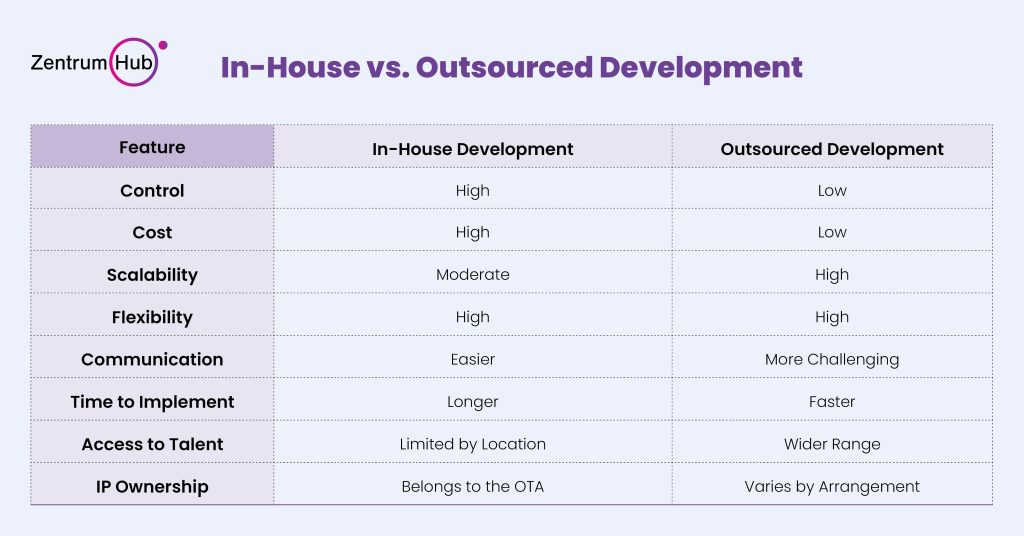
Should OTAs Prefer In-House VS Outsourcing Tech Solutions Overview In-House Development: Building Your Own Tech Team Outsourcing Tech Development:Partnering with Third-Party Vendor Choosing the Right Path: In-House vs. Outsourced Development The Hybrid Approach: Combining In-House and Outsourced Development Conclusion For Online Travel Agencies (OTAs), technology is the lifeblood. It powers everything from search functionalities and booking systems to customer interactions and data analysis. Choosing the right approach to tech solutions, however, can be a complex decision. OTAs must weigh the merits of building an in-house tech team against outsourcing development to a third-party vendor. This blog will explore the advantages and disadvantages of both in-house and outsourced tech solutions, helping OTAs navigate the best path for their specific needs. In-House Development: Building Your Own Tech Team Having an in-house tech team offers OTAs a high degree of control over their technology stack. Here’s a breakdown of the pros and cons: Pros: Direct Control: An in-house team allows for close collaboration between developers and product managers. This fosters a deep understanding of the OTA’s business goals and enables the creation of custom-tailored solutions that perfectly align with those goals. Scalability and Flexibility: In-house teams can be scaled up or down as needed. They can also adapt quickly to changing market demands and technological advancements. Improved Communication and Collaboration: Daily interaction with developers fosters a strong understanding of the project’s vision and facilitates streamlined communication. This can lead to faster development cycles and fewer roadblocks. IP Ownership: Intellectual property (IP) rights for any developed technology remain with the OTA. This can be crucial for OTAs with unique features or functionalities that give them a competitive edge. Cons: High Cost: Building and maintaining an in-house tech team is expensive. It requires not only salaries and benefits for developers but also infrastructure costs for equipment, office space, and software licenses. Time Commitment: Recruiting, training, and managing a qualified in-house team takes considerable time and resources. This can delay project timelines and hinder the OTA’s ability to adapt to rapidly evolving technological landscapes. Talent Pool Limitations: Depending on the OTA’s location, finding and retaining top-tier tech talent can be challenging. This can limit the team’s capabilities and hinder innovation. Risk of Knowledge Silos: In-house teams can become isolated, leading to knowledge silos and a lack of diverse perspectives. Outsourcing Tech Development: Partnering with a Third-Party Vendor Outsourcing tech development involves partnering with a specialized company to handle some or all OTAs technology needs. Here’s a closer look at the pros and cons: Pros: Cost-Effectiveness: Outsourcing is typically cheaper than building and maintaining an in-house team. OTAs pay only for the services they need, eliminating the need for fixed costs associated with salaries, benefits, and infrastructure. Access to Expertise: Outsourcing vendors have access to a pool of experienced developers with diverse skillsets. This allows OTAs to leverage expertise that might not be readily available in-house. Faster Development: Outsourcing vendors often have established development processes and can complete projects more quickly than building an in-house team from scratch. Focus on Core Business: Outsourcing frees up internal resources to focus on core business functions like marketing and customer service. Cons: Loss of Control: OTAs relinquish some control over the development process when outsourcing. Clear communication and a well-defined project scope are essential to ensure the final product meets expectations. Security Concerns: Sharing sensitive data with a third-party vendor can raise security concerns. It’s crucial to choose an outsourcing partner with a strong track record of data security. Communication Challenges: Effective communication can be more challenging with outsourced teams, especially if there are time zone differences or language barriers. Vendor Lock-In: Switching outsourcing vendors can be disruptive and expensive, especially for complex projects. Choosing the Right Path: In-House vs. Outsourced Development The decision between in-house and outsourced development hinges on several factors specific to each OTA. Here are some key considerations: Size and Budget: Larger OTAs with substantial budgets may find in-house development more manageable. Smaller OTAs or those with tighter budgets might benefit more from outsourcing. Project Scope and Complexity: For simple, well-defined projects, outsourcing can be a good option. Complex projects requiring ongoing maintenance might be better suited for an in-house team. Technical Expertise: If the OTA has a strong internal tech team with the necessary skills, in-house development might be the way to go. If expertise is lacking, outsourcing can provide access to the required talent. Speed and Time to Market: For projects requiring a fast turnaround, outsourcing can be advantageous. However, for projects with a longer development timeline, building an in-house team might provide more control. The Hybrid Approach: Combining In-House and Outsourced Development Many OTAs opt for a hybrid approach, leveraging the strengths of both in-house and outsourced development. For example, an OTA might maintain a core in-house team for critical projects and strategic initiatives, while outsourcing non-core functionalities or routine maintenance tasks. This hybrid approach offers flexibility and cost-effectiveness. It allows OTAs to scale their development efforts up or down as needed and access specialized expertise when required. Conclusion There’s no one-size-fits-all answer to the in-house vs. outsourced development question. The optimal approach depends on the unique circumstances of each OTA. By carefully considering the factors mentioned above, OTAs can make an informed decision that aligns with their specific needs and goals. Having a clear understanding of the project’s goals, functionalities, and target audience is essential for success. Open and consistent communication is crucial, especially when working with outsourced vendors. Be realistic about timelines, budgets, and resource requirements. Rigorous testing is essential to ensure the quality and functionality of the developed solution. By carefully evaluating their needs and implementing best practices, OTAs can leverage technology to achieve their business objectives and gain a competitive edge in the ever-evolving travel industry. Read more useful blogs for Travel Agencies (OTAs) How Slow Booking System Can Ruin Online Travel Agencies? Why Traditional Hotel Booking Methods Are Costing You Time and Money? Should OTAs Prefer In-House VS Outsourcing Tech Solutions How to Choose Payment Gateways
Step-by-Step Guide – Go Live with ZentrumHub
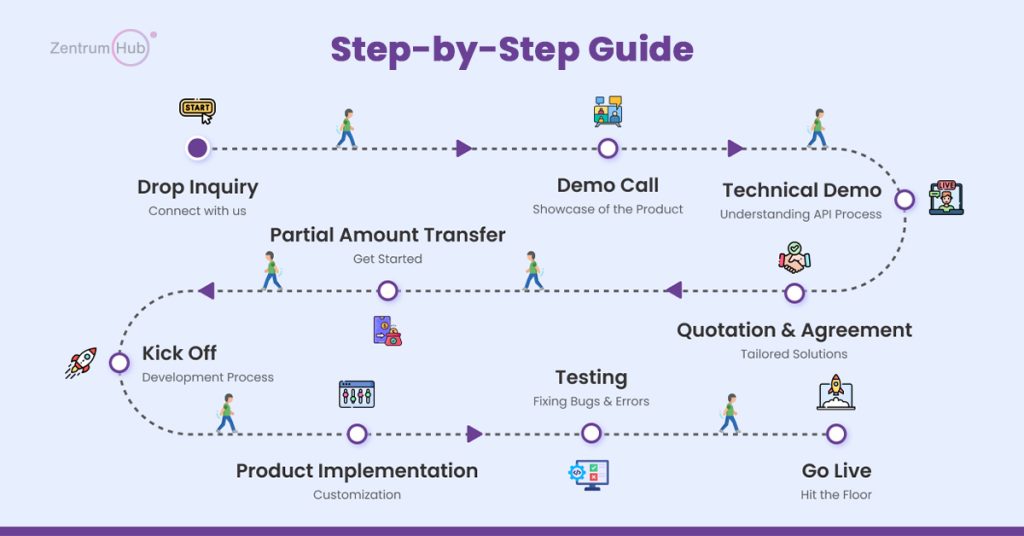
Step-by-Step Guide – Go Live with ZentrumHub Overview Going Live with ZentrumHub API Customers: Your Path to Integration White-Label Customers: Custom Solutions for Your Brand Conclusion Whether you’re an API customer looking for seamless integration or a white-label customer wanting a fully customized solution, our process is designed to ensure a smooth and efficient transition from initial demo to full launch. Let’s walk through the steps together and explore how ZentrumHub can transform your booking operations and enhance your customer experience. Going Live with ZentrumHub 1. Schedule a Live Demo The first step on your journey with ZentrumHub is scheduling a live demo. Our team will walk you through the features and capabilities of our hotel booking engine and API product, demonstrating how it can revolutionize your booking processes and enhance your customer experience. This is your opportunity to ask questions and see the system in action. 2. Define Scope & Contract Signing Once you’ve seen what ZentrumHub can do, the next step is to define the scope of your project. This involves understanding your specific requirements, the features you need, and the customizations you want. Our team will work closely with you to outline the details, ensuring that our solution meets your exact needs. With the scope defined, we move on to contract signing. This formalizes our partnership and sets the stage for the onboarding process. We’ll ensure all terms are clear and mutually agreed upon, paving the way for a successful collaboration. 3. Onboarding Onboarding is where we lay the groundwork for your go-live journey. Our dedicated team will guide you through the initial setup, providing the necessary resources and support to get you started. We make sure you have everything you need to move forward confidently. API Customers: Your Path to Integration For our API customers, we have tailored the process to ensure seamless integration with your existing systems. Here’s how it works: 1. API Overview As an API customer, you’ll first receive a comprehensive overview of our API. Our team will provide detailed documentation and support to help you understand the capabilities and functionalities of the ZentrumHub API. We are here to assist you every step of the way, ensuring you have the knowledge and resources needed for successful integration. 2. Integration Phase & Checkpoints Next, it’s time for your team to integrate the ZentrumHub API into your systems. Our documentation will guide you through the process, and our support team will be available to assist with any challenges you may encounter periodically. This step involves connecting your systems to the ZentrumHub API, ensuring that data flows smoothly and efficiently. 3. Certification – ZentrumHub Once the integration is complete, ZentrumHub will conduct a thorough certification process. This involves rigorous testing to ensure that the integration meets our high standards for performance, security, and reliability. Our certification process guarantees that everything is functioning correctly and that your systems are ready for the final step. 4. Live Credentials Setup and Go Live After successful certification, we will set up your live credentials. This final step transitions your systems from the sandbox environment to the live production environment. With live credentials in place, you are ready to go live! Your customers will now have access to a seamless and efficient booking experience powered by ZentrumHub’s robust hotel booking engine. White-Label Customers: Custom Solutions for Your Brand For our white-label customers, we offer a personalized approach to create a solution that perfectly aligns with your brand. Here’s how we do it: 1. Requirements Gathering We begin by thoroughly gathering your requirements. Our team will work closely with you to understand your specific needs, preferences, and objectives. This step ensures that we have a clear understanding of your vision and the features you want in your custom white-label solution. 2. Customizations as per Product Definitions and Requirements Based on the gathered requirements, we proceed with customizing the white-label solution to match your brand’s identity. This involves tailoring the look and feel of the booking engine, as well as configuring functionalities to meet your specific product definitions and requirements. Our goal is to create a solution that is both visually appealing and functionally robust. 3. Verification Once the customizations are complete, we move on to the verification phase. This involves rigorous testing and quality checks by both ZentrumHub and your team. We ensure that the white-label solution meets all performance, security, and usability standards. This step guarantees that the product is flawless and ready for your customers. 4. Go Live With successful verification, your custom white-label solution is ready to go live. We will assist you with the final steps of the launch process, ensuring a smooth transition and providing support as you begin offering a top-notch booking experience to your customers. Conclusion At ZentrumHub, we’re committed to making your go-live process as smooth and efficient as possible. Whether you’re an API customer integrating our powerful booking engine into your systems, or a white-label customer looking for a custom solution, our team is here to support you every step of the way. Schedule your live demo today and take the first step towards revolutionizing your hotel booking process with ZentrumHub! Read more blogs on Booking Engine Step-by-Step Guide – Go Live with ZentrumHub Know all about Hotel Booking Engine, Functionality, Cost, Types, and Ways to Build Ideal Features that a Hotel Booking Engine Must Have Why Must Every Travel Business Invest in Online Booking Engine?
What is the Difference Between B2C and B2B Hotel Booking API?
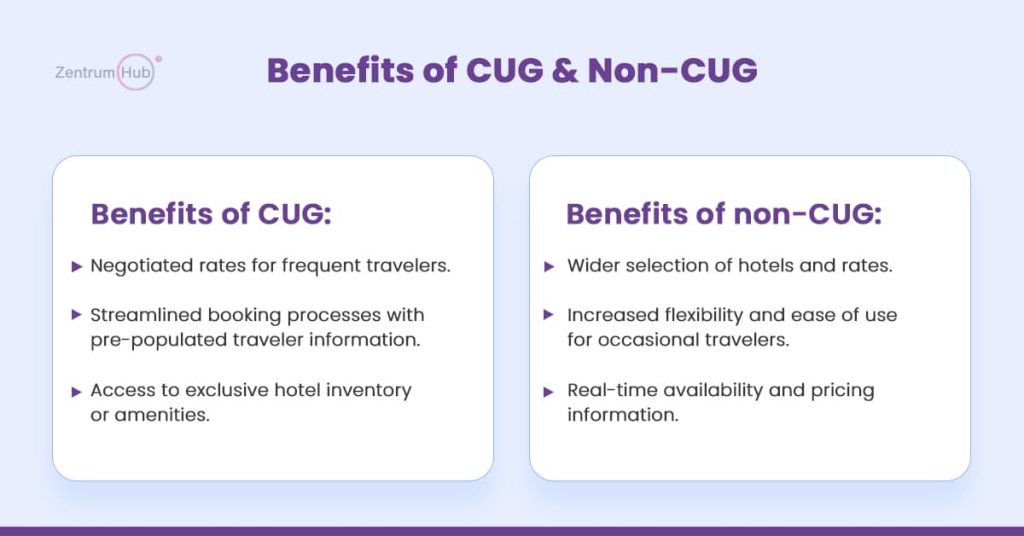
What is the Difference Between B2C and B2B Hotel Booking API? Overview B2B vs. B2C APIs: Understanding the Target Market Understanding the difference between CUG vs. Non-CUG Conclusion The world of hotel booking APIs can be a complex one, especially when you start diving into the different functionalities and target audiences. These APIs extend far beyond simply searching for hotels – they offer a comprehensive suite of features across the B2B (Business-to-Business) and B2C (Business-to-Consumer) landscapes. This blog post aims to be your compass, navigating you through the key differences between B2B and B2C APIs, along with CUG (Closed User Group) and Non-CUG functionalities within the hotel booking space. B2B vs. B2C APIs: Understanding the Target Market The complexities of hotel booking APIs stem from the need to address these diverse functionalities and user groups. Recognizing these distinct needs is fundamental to selecting and utilizing the most appropriate Hotel Booking API for your specific requirements. B2B (Business-to-Business): These Hotel Booking APIs are designed to facilitate connections between businesses. In the context of hotel bookings, a B2B API would enable travel agencies, corporate booking platforms, or tour operators to seamlessly integrate hotel booking functionalities into their existing systems. This empowers them to offer hotel booking services to their clients without the burden of manually managing contracts or inventory with individual hotels. Examples of B2B API Use Cases: A travel management company integrates a B2B API to offer a one-stop shop for corporate clients to book flights, hotels, and car rentals. A tour operator utilizes a B2B hotel booking API integration to streamline hotel bookings for pre-packaged vacation tours. B2C (Business-to-Consumer): B2C APIs cater directly to consumers. This is what you encounter when you use online travel booking platforms or hotel chain websites. These APIs allow consumers to search for hotels, compare prices, and book rooms directly. Examples of B2C API Use Cases: A popular online travel agency leverages a B2C API to allow users to search for hotels based on location, price range, and amenities. A hotel chain utilizes a B2C hotel booking API integration to power their website’s booking engine, enabling guests to seamlessly book rooms directly. Understanding the difference between CUG vs. Non-CUG Having grasped the B2B and B2C landscape, let’s delve into the access control mechanisms employed by hotel booking APIs: CUG (Closed User Group): CUG restricts access to a predefined group of users, typically established through negotiated contracts. In the realm of hotel bookings, this could translate to a corporate travel management company having a CUG agreement with a specific hotel chain. This agreement allows the company’s employees to enjoy exclusive rates or booking privileges unavailable to the public. Benefits of CUG: Negotiated rates for frequent travelers. Streamlined booking processes with pre-populated traveler information. Access to exclusive hotel inventory or amenities. Non-CUG: These are open to a broader audience and adhere to the standard functionalities of B2B or B2C APIs. Anyone with the necessary credentials can access the travel booking portal and conduct their bookings. Benefits of non-CUG: Wider selection of hotels and rates. Increased flexibility and ease of use for occasional travelers. Real-time availability and pricing information. Choosing between CUG and Non-CUG depends on your specific requirements. If you require access to exclusive rates or amenities, a CUG might be the ideal choice. However, if you prioritize wider selection and flexibility, a non-CUG would be more suitable. Want to Learn More? Check Out These Hotel API Blogs Travel API Comparison: 8 Factors for Selecting the Best One Why Do OTAs Need Travel API? Travel APIs: The Cost of Integration for OTAs Travel API Integration: Types, Pricing, Benefits & Timeline How Can Startups and OTAs Maximize Revenue with Hotel Booking APIs? How to Optimize Your Platform with Hotel API Integration? Complete Guide to Hotel API Integration: Costs, Benefits, Technical Challenges in Hotel API Integration and How to Overcome Them How to Choose the Best Hotel API Provider? Key Features to Evaluate Hotel API Integration Costs: Pricing Methods for OTAs Explained What is the Difference Between B2C and B2B Hotel Booking API? Role of Hotel Booking APIs in Hotel Booking Engine? Conclusion Whether you’re a travel company seeking to integrate hotel booking or a hotel chain looking to expand your reach, knowing the target audience and access restrictions will ensure you select the most suitable API solution. By carefully evaluating these factors alongside the B2B, B2C, CUG, and Non-CUG considerations, you can make an informed decision and select the most suitable Hotel Booking API. FAQs: Difference Between B2C and B2B Hotel Booking API? What are the two main types of Hotel Booking APIs? There are two main types of Hotel Booking APIs: B2B (Business-to-Business) and B2C (Business-to-Consumer). B2B APIs are designed for businesses to integrate hotel booking functionalities into their platforms, while B2C APIs cater directly to consumers searching and booking hotels. What are the benefits of using a CUG (Closed User Group) API? CUG APIs offer several benefits, including negotiated rates for frequent travelers, streamlined booking processes, and access to exclusive hotel inventory or amenities. What are the benefits of using a non-CUG API? Non-CUG APIs provide a wider selection of hotels and rates, increased flexibility for occasional travelers, and real-time availability and pricing information. How do I choose between a CUG and non-CUG API? The choice between CUG and non-CUG depends on your needs. If you require exclusive rates or amenities, a CUG might be ideal. If you prioritize wider selection and flexibility, a non-CUG would be more suitable.
WebBeds as Supplier: Everything You Should Know Before Integrate?
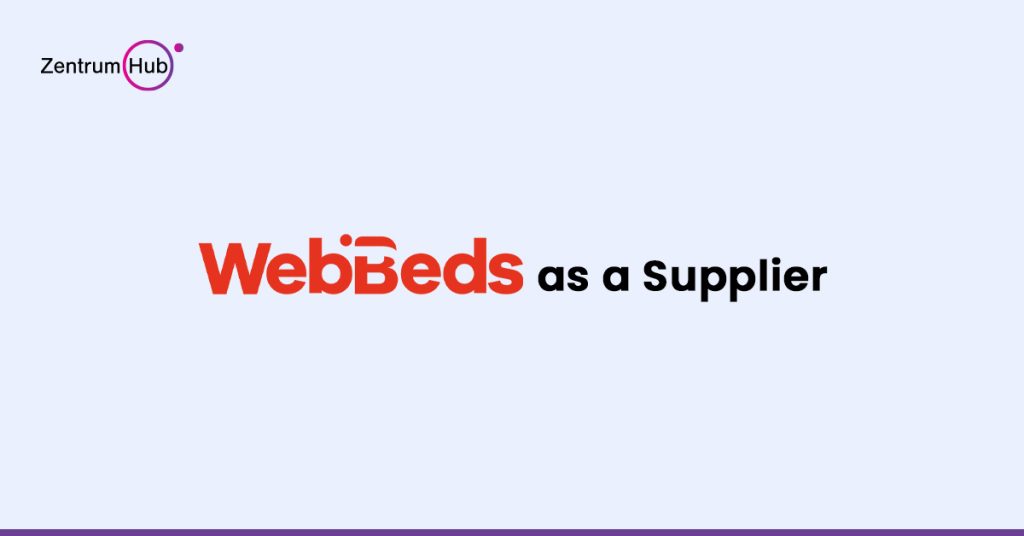
WebBeds as Supplier: Everything You Should Know Before Integrate? Introduction The overview of WebBeds API (DCML) In Summary WebBeds is a renowned global online marketplace that offers a platform connecting various travel service suppliers to a vast distribution network of travel buyers all around the world. As a mediator, WebBeds collects inventory from travel suppliers, aggregates the content, and displays it on its platform. This platform is then distributed to their vast network of travel trade buyers, who in turn sell it to the public, making it a convenient and accessible way to book travel services suppliers. WebBeds marketplace offers access to more than 500,000 hotels across 39,000 locations worldwide. If you want to expand your distribution platform, integrating WebBeds marketplace’s global portfolio of hotels could be an excellent opportunity to access a diverse range of accommodation options worldwide. Let’s understand how integrate WebBeds as a supplier with its API suite – (DOTWconnect Markup Language) or as they like to call it DCML. The overview of WebBeds API (DCML) WebBeds is a global travel hotelMEt wholesaler that offers a vast range of hotel products. WebBeds has developed an XML-based interface called DOTWconnect Markup Language (DCML) to manage reservations and access information on their product range. This interface provides access to a proprietary reservation system, which includes over 25,000 negotiated rate properties and standard rates at over 10,000 properties. DCML standardizes the requests and responses to the different sources, providing a coherent product with a single communication interface. By using DCML, travel companies can easily access and manage reservations for WebBeds’ extensive product range. Standard Protocols Go-Live Process: To begin testing, you will need to contact the WebBeds sales department and request test credentials. Remember that all transactions conducted through the DCML Test system are solely for testing purposes. While the system functionality remains the same between the Test and Live systems, bookings made in the Test environment are not forwarded to the suppliers. Once your development is complete, kindly contact the WebBeds sales department to activate access to the Live server. Development Phase: After receiving your test credentials, you can begin developing your application or framework. The communication process is simple and involves exchanging XML messages (request-answer/response) between your system and DOTWconnect. All requests should be posted (using the POST method) via HTTP or HTTPS protocols to xmldev.dotwconnect.com/request.dotw. The system will respond regardless of whether the request was successfully processed and will inform you of the outcome of the operation. For more information on request and response formats, please refer to the dedicated area of each request. Hotel Communication Structure To help you process your hotel reservations, we have compiled a list of communication methods you can use to connect with the DOTWconnect server. Each method has a detailed explanation of the corresponding request and response formats. This information will assist you in selecting the appropriate communication method that suits your needs. DOTWconnect server has the following XML requests commands for hotels: searchhotels getrooms savebooking confirmbooking getbookingdetails updatebooking cancelbooking bookitinerary deleteitinerary searchbookings Hotels Communication Structure General Request Searchhotels: This method retrieves hotel details such as starting price and availability based on specific search criteria provided in the XML request. The criteria may include the date range, city, and passenger room occupancy, among others. When making a request through DOTWconnect, there are two sections that need to be included: bookingDetails and return. The bookingDetails section contains important information about your travel dates, room occupancy, and preferred currency for pricing. The return section includes details about filtering and room information for each hotel in the response list, but only if the getRooms element is set to true. It’s worth noting that the company offers both serviced apartments and hotels through its searchHotels method. You can examine the ratings in their XML responses to distinguish between the two. Serviced Apartments can be identified by their rating, which will have the value 48055. If you want to filter the results and retrieve only serviced apartments in the response, you can filter the rates using the filter: rating – filters the hotels based on the classification (star rating) (fieldTest: equals, in) Getrooms Clients must use a specific request to retrieve a comprehensive list of all room types along with their respective rates and availability details for a chosen hotel. It is important for clients to incorporate validation checks in this step to ensure that the details returned at the property level are accurate. This is because some of the results returned in the availability response may be extracted from cache systems, which could potentially contain outdated information. When you make a request to block particular room types in the DOTWconnect system, you will receive an encrypted string as a response. This string can be used in subsequent requests to maintain the blocked room types until the booking process is completed. However, please note that the system will hold these blocked rooms for a maximum of 5 minutes only. It’s essential to keep in mind that the 5-minute blocking time is guaranteed only for FIT contracts. Confirmbooking This request is to generate an itinerary that includes one or more successfully booked rooms or services. Each booked room or service will have a unique reference number or booking code, which can be modified or cancelled as required. If multiple rooms or services are booked in one booking flow, they will be grouped together under the same itinerary number. The confirmbooking method provides the option of creating a new itinerary or adding services to an existing confirmed itinerary. Searchbookings This method provides details of all the bookings made by a customer on the WebBeds platform. The details include passenger names, booking status, and booking codes, which are filtered based on the criteria specified in the searchBookings request. Want to Know More? Explore Other Hotel Suppliers WebBeds as Supplier: Everything You Should Know Before Integrate? Key Aspects to Know Before Including HotelBeds as a Supplier Know About Agoda as a Supplier – Types, Steps, Time for API Integration Know
How to Choose Payment Gateways for OTAs?
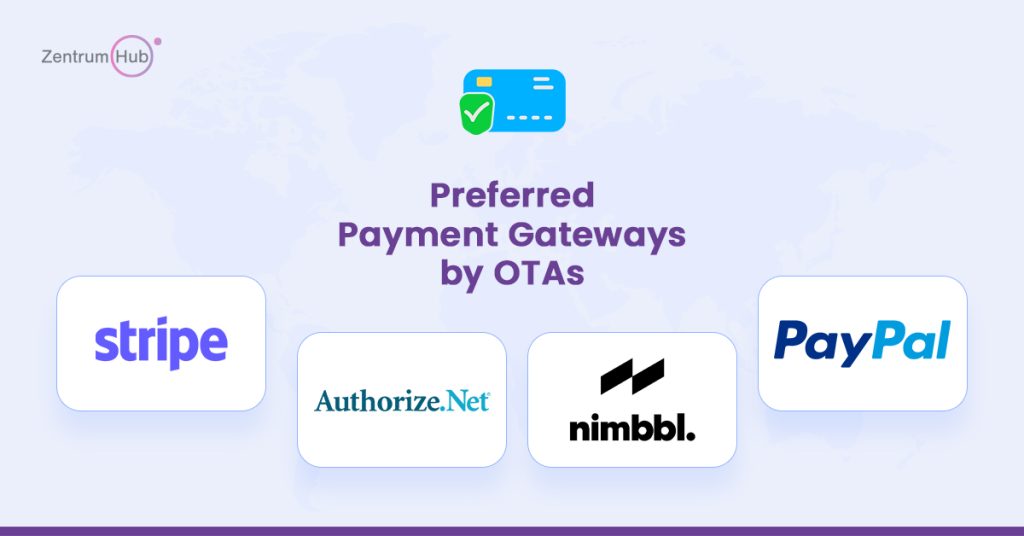
How to Choose Payment Gateways for OTAs? Overview Payment Gateways Preferred by OTAs Factors to consider While Choosing Payment Partner for OTA? Understanding Payment Integration Methods Navigating the Legal Landscape: PCI DSS and Merchant of Record What Payment Gateways does ZentrumHub offer? Concluding Thoughts Online Travel Agencies (OTAs) face fierce competition in today’s digital travel landscape. Travelers expect a seamless booking experience, and a clunky checkout process can be a dealbreaker. This is where selecting suitable payment gateways becomes crucial. In this blog, we’ll explore the most preferred payment gateway options for OTAs and the factors to consider when making your choice. We’ll equip you with the knowledge to ensure a smooth customer checkout journey, boost conversions, and build traveler loyalty. Payment Gateways Preferred by OTAs When it comes to payment gateways for OTAs, several options stand out: Stripe: A globally recognized leader, Stripe offers a user-friendly interface, robust security features, and support for a wide range of credit cards, debit cards, and alternative payment methods like Apple Pay and Google Pay. Additionally, Stripe caters to the growing trend of Buy Now Pay Later (BNPL) options, integrating with Affirm, Afterpay, and Klarna, which can be particularly attractive to budget-conscious travelers. Stripe charges 2% for cards issued in India and 3% for cards issued outside India. Authorize.net: A well-established player, authorize.net provides a secure platform for handling various payment types. It offers fraud prevention tools and recurring billing functionalities, making it suitable for subscription-based travel services. However, its customizability options might be less extensive than those of some newer players. Nimbbl: This emerging player focuses on the travel industry, offering features tailored to OTA needs. Nimbbl boasts features like real-time currency conversion, support for local payment methods, dynamic pricing capabilities, and catering to a global traveler base. Beyond these popular options, several other payment gateways cater to specific needs: PayPal: A widely recognized digital wallet solution, PayPal offers a convenient checkout experience for customers with accounts. Regional Payment Gateways: For an international reach, consider integrating regional payment gateways popular in specific markets, like Alipay for China or UnionPay for transactions within mainland China. Factors to consider While Choosing Payment Partner for OTAs? Selecting the right payment gateway requires careful consideration of several factors: Security: Data breaches are a significant concern. Ensure your chosen gateway prioritizes robust security measures like PCI compliance and fraud prevention tools. Payment Methods Supported: Cater to your target audience by offering a variety of payment methods, including credit cards, debit cards, digital wallets, and local payment options. Global Reach: If you cater to international travelers, consider a gateway that supports multiple currencies and facilitates seamless cross-border transactions. Transaction Fees: Compare processing fees and additional charges associated with different gateways to optimize your financial bottom line. Integration Ease: A smooth integration process is essential. Look for gateways with user-friendly APIs and developer tools to ensure quick and efficient implementation. Customer Support: Reliable customer support is crucial for resolving any issues arising during transactions. Understanding Payment Integration Methods Now that we’ve explored popular payment gateway options let’s delve into the different integration methods: Hosted Payment Gateways: These are the simplest to set up. Customers are redirected to a secure payment page hosted by the gateway provider to enter their payment information. This ensures a high level of security but offers less customization for the checkout experience. Self-Hosted Payment Gateways: With this method, the payment information is collected directly on your website. This offers greater control over the checkout flow but requires significant technical expertise to ensure security and PCI compliance. API-Hosted Payment Gateways: This approach provide more flexibility than hosted gateways. You integrate the gateway’s API into your website, allowing for a customized checkout experience while still leveraging the gateway’s security features. However, implementation requires some technical knowledge. Local Bank Integration Gateways: This method connects directly to local banks in specific regions, enabling real-time bank transfers or direct debits. This can be beneficial for targeting particular markets but may require additional partnerships and compliance considerations. Navigating the Legal Landscape: PCI DSS and Merchant of Record Payment Card Industry Data Security Standard (PCI DSS): This security standard is a global mandate for any organization that stores, transmits, or processes cardholder data. When selecting a payment gateway, ensure they are PCI DSS compliant. This provides peace of mind that your customer’s financial information is protected according to industry best practices. Merchant of Record (MOR): For OTAs that outsource payment processing entirely, partnering with a Merchant of Record can be a strategic decision. A MoR assumes full responsibility for PCI DSS compliance and financial transactions, allowing OTAs to focus on selling travel products and services. However, this also means relinquishing some control over the customer payment experience and potentially incurring additional fees associated with the MOR service. The decision of whether to become your Merchant of Record or outsource to a third-party provider depends on several factors: Technical Expertise: Managing PCI DSS compliance requires ongoing vigilance and technical expertise. If your OTA lacks the in-house resources, partnering with an MOR can be wise. Transaction Volume: The cost of PCI DSS compliance can be significant for OTAs with a high volume of transactions. An MOR might offer economies of scale, making it a more cost-effective option. Control Preferences: Some OTAs prioritize complete control over the customer journey, including checkout. In this case, becoming your own MOR might be preferable. Concluding Thoughts In conclusion, selecting the right payment gateway and deciding on the Merchant of Record approach are crucial for OTAs. By carefully considering the above factors, OTAs can ensure a secure and streamlined checkout experience for their customers, fostering trust and driving business growth. Read more useful blogs for Travel Agencies (OTAs) How Slow Booking System Can Ruin Online Travel Agencies? Why Traditional Hotel Booking Methods Are Costing You Time and Money? Should OTAs Prefer In-House VS Outsourcing Tech Solutions How to Choose Payment Gateways for OTAs? 8 Factors to Consider Before Choosing the Right Hotel Supplier for OTAs How Can B2B
8 Factors to Consider Before Choosing the Right Hotel Supplier for OTAs
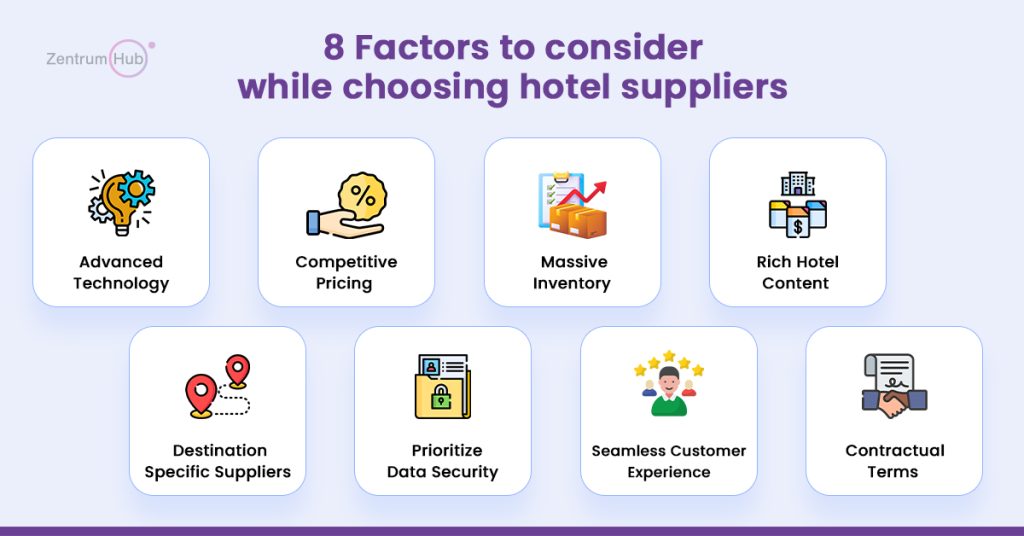
8 Factors to Consider Before Choosing the Right Hotel Supplier for OTAs Overview 8 Considerations while selecting Hotel Suppliers To Conclude Zentrum Connect: A Unified API Supplier In the ever-evolving world of online travel agencies (OTAs), finding the right hotel supplier is like steering your ship through tidal waves. You need partners who can provide the most sought-after destinations, accurate information, and seamless booking experiences. But with a vast ocean of options, how do you chart a course towards success? This blog will act as a guide to equip you with the knowledge to identify the perfect hotel supplier, ensuring a smooth journey to increased bookings and happy customers. 8 Considerations while selecting Hotel Suppliers Selecting a hotel supplier could be based upon multiple factors, let’s learn more about them. 1) Advanced Technology It’s no secret that technology has become an integral part of every business. As an OTA, it’s essential to collaborate with a hotel API supplier that offers flexibility and scalability that aligns with your platform. A supplier with advanced technology and reliable hotel booking API is crucial. Furthermore, having a smooth integration, a rigorous certification process, comprehensive documentation, and technical support are all essential factors to consider. 2) Competitive Pricing It is essential to ensure that the hotel API supplier offer competitive rates that align with your business models and target audience be it budget travelers or luxury seekers, or corporate. Frequent Updates: Verify the supplier provides frequent and accurate price updates to avoid discrepancies and customer dissatisfaction. Reasonable Commissions: Negotiate commission rates that are fair and allow your OTA to achieve its revenue goals. Customization Flexibility: Choose a supplier that allows you to configure and use custom rates for specific customer segments. Member Benefits: If you have a membership program, look for a supplier that offers closed user group (CUG) rates for your members. Inventory Range: Consider the type of accommodation your target market seeks. For example, a good coverage of affordable options like 3 or 4-star hotels, hostels, and apartments. Focusing on these key aspects can help you select a hotel API supplier that supports your business model, pricing strategy, and customer needs, ensuring that your online travel agency platform can achieve its revenue goals. 3) Massive Inventory Selecting the right hotel booking API supplier with a proper inventory is crucial. Your customers have a wide range of preferences when it comes to hotels, so you need a supplier that offers a vast selection of properties in popular destinations such as Expedia, Agoda, and more. Choosing suppliers that provide real-time availability and rates can help your OTA offer accurate and seamless booking experience for your customers. 4) Rich Hotel Content Accurate hotel information is crucial for travel businesses that includes details like room availability, photos, star ratings, and even geocodes for mapping. With this information, customers can make confident booking decisions. In turn, this builds trust and loyalty, ultimately boosting sales. 5) Destination Specific Suppliers One of the most important aspects of running OTA is to partner with destination specific suppliers as they have a strong presence in their region. They can also provide you with the best hotel inventory, products and competitive prices which can then generate a good number of sales. Thus, identifying what destination your customers might like to visit, you can choose a particular supplier in the region to expand your reach as well as revenue. 6) Prioritize Data Security Choose a supplier with a strong commitment to protecting your customers’ information. Look for evidence of compliance with industry regulations and security best practices. This might include robust encryption protocols, firewalls, and other measures to safeguard sensitive data. 7) Seamless Customer Experience Prioritize suppliers offering exceptional online customer support. A robust operational infrastructure is equally important. They should handle post-booking confirmations efficiently and address customer inquiries promptly, ensuring a smooth experience for your travelers. Consider a supplier that offers 24/7 support to address booking issues quickly, minimizing customer frustration and ensuring a smooth experience. 8) Contractual Terms The supplier you choose could make or break your OTA’s success. That’s why it’s crucial to ensure that their contract terms align with your business objectives and goals. You need to make sure that the contract includes all the essential details, such as the supplier’s obligations, your obligations, pricing, termination, and dispute resolution. A contract with unclear or unfavorable terms could lead to misunderstandings and conflicts that could hurt your business in the long run. To avoid this, work with a supplier that offers flexible contract terms and is willing to negotiate terms that work for both parties. By paying attention to these details, you’ll be setting your OTA up for success and ensuring a strong partnership with your supplier. Building a Strong Partnership To ensure a successful collaboration, consider a supplier’s reputation for providing high-quality hotel inventory and reliable service. Research online reviews, testimonials, and references from other OTAs. Ideally, speak with existing clients to gauge their satisfaction. To Conclude As an OTA, choosing the right hotel API supplier can make all the difference in delivering an exceptional booking experience to your customers. A supplier who can offer a vast inventory, competitive pricing, reliable technology and API, excellent support, and a great reputation in the industry is critical. It’s essential to ensure that the supplier’s contract terms align with your business goals and objectives and that they are willing to work with you to achieve your OTA’s success. Consider these factors when carefully selecting a supplier, and you’ll be well on your way to providing your customers with a top-notch travel booking experience. Zentrum Connect: A Unified API Supplier Having a trusted hotel API supplier is a must for an OTA, which is why you should consider Zentrum Connect. Zentrum Connect acts as a bridge between travel businesses and a vast network of travel suppliers, all through a single, unified API. This eliminates the need for individual integration with each supplier, saving businesses significant time and resources. Connect to over 60+ travel


